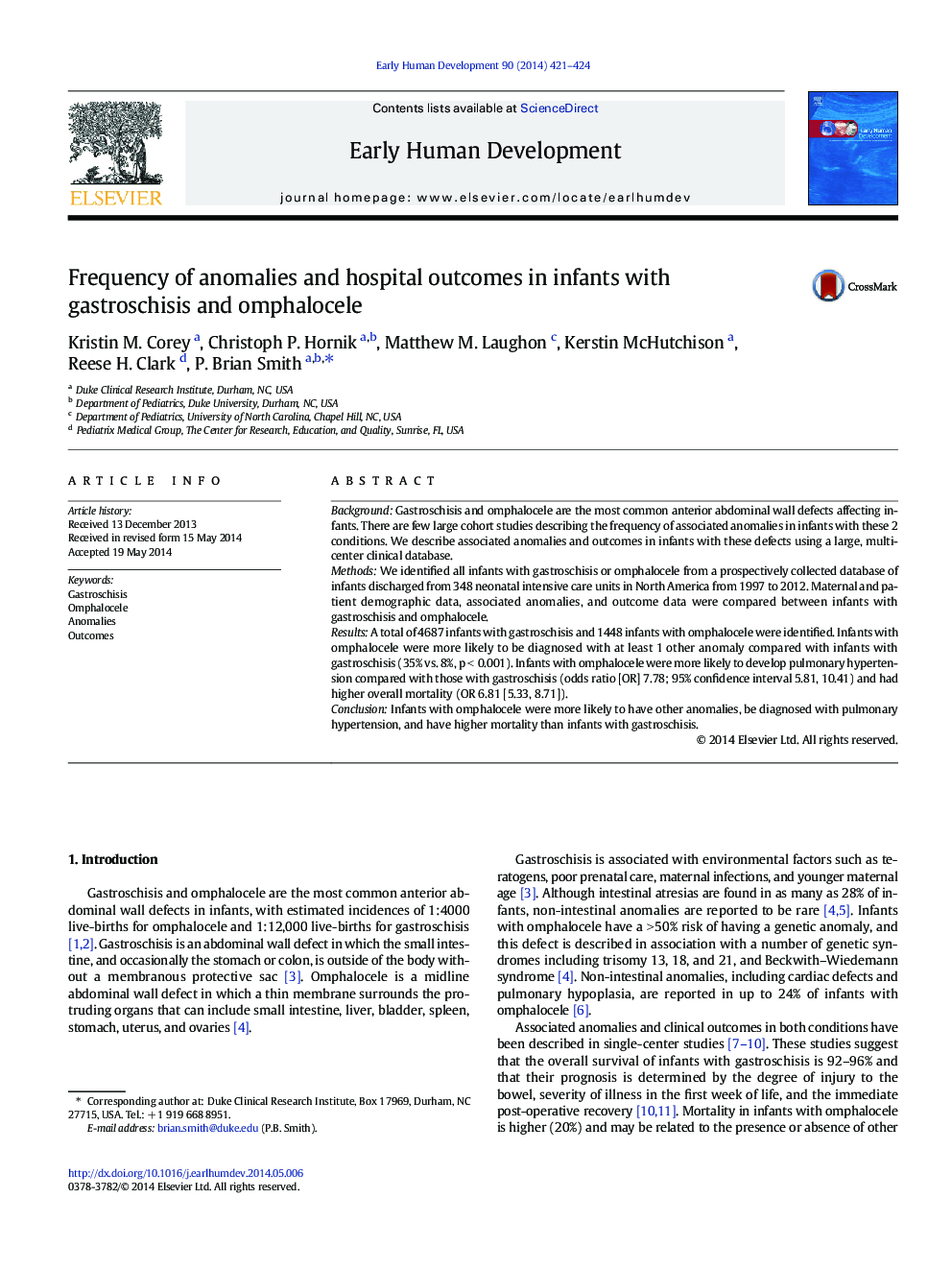| Article ID | Journal | Published Year | Pages | File Type |
|---|---|---|---|---|
| 3916532 | Early Human Development | 2014 | 4 Pages |
•Gastroschisis and omphalocele are common anterior abdominal wall defects in infants.•Infants with omphalocele more often have other anomalies and higher mortality.•Pulmonary hypertension is more often diagnosed in infants with omphalocele.
BackgroundGastroschisis and omphalocele are the most common anterior abdominal wall defects affecting infants. There are few large cohort studies describing the frequency of associated anomalies in infants with these 2 conditions. We describe associated anomalies and outcomes in infants with these defects using a large, multi-center clinical database.MethodsWe identified all infants with gastroschisis or omphalocele from a prospectively collected database of infants discharged from 348 neonatal intensive care units in North America from 1997 to 2012. Maternal and patient demographic data, associated anomalies, and outcome data were compared between infants with gastroschisis and omphalocele.ResultsA total of 4687 infants with gastroschisis and 1448 infants with omphalocele were identified. Infants with omphalocele were more likely to be diagnosed with at least 1 other anomaly compared with infants with gastroschisis (35% vs. 8%, p < 0.001). Infants with omphalocele were more likely to develop pulmonary hypertension compared with those with gastroschisis (odds ratio [OR] 7.78; 95% confidence interval 5.81, 10.41) and had higher overall mortality (OR 6.81 [5.33, 8.71]).ConclusionInfants with omphalocele were more likely to have other anomalies, be diagnosed with pulmonary hypertension, and have higher mortality than infants with gastroschisis.
